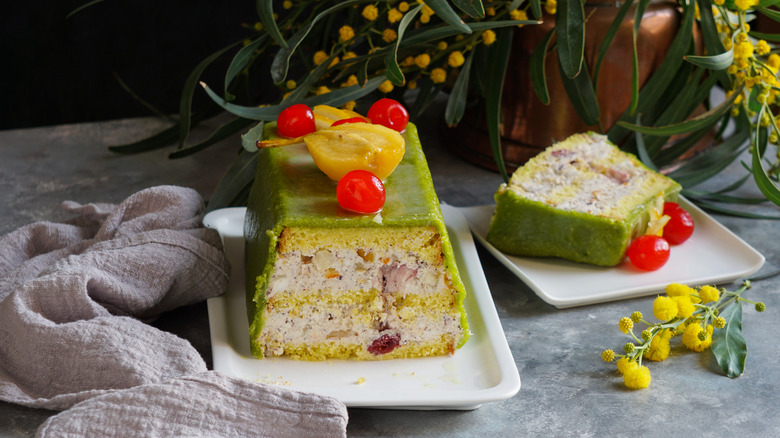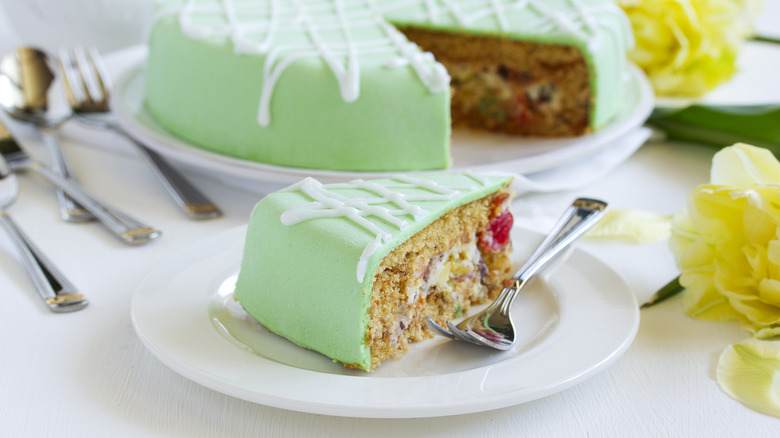The Colorful Ingredient Traditionally Used For Sicilian Cassata Cake
When considering the gastronomic cultures that have gifted us with dessert all-stars, we'd have to argue that Italy is a strong contender for amazingly delicious sweet treats, from rich, creamy gelato to boozy zabaglione. One region of the country, in particular, seems to put out amazing dessert after amazing dessert, and that's Sicily, the island located just west of the "toe" of Italy's "boot." Cannoli, granita, and cassata all hail from the area (via Following the Rivera).
That final dessert, cassata, is a luscious confection of syrup-soaked layers of sponge cake alternated with a sweetened ricotta filling, and it's likely caught your eye if you've ever visited a well-stocked Italian bakery. Marked by an attractive, pale green outer layer, cassata cake is often decorated with preserved fruit, curlicues of icing, and other decorative flourishes. But even if you've enjoyed the festive dessert, often prepared for Easter, you might not be aware that that outer green layer sometimes takes its color from a natural — and highly prized —ingredient.
The pale green that enrobes cassata cake is marzipan
Said to have originated in Sicily around the 10th century, according to Eater, the sweet known as cassata has somewhat complicated origins, as there's evidence that the Arabs, who occupied the island starting in that century, heavily influenced the supposedly Sicilian recipe. In any event, the cake has been thoroughly incorporated into the Sicilian dessert canon, boasting the almonds that grow wild and abundant across the entire island and are common to the island's sweets, according to Producers Market.
In cassata, a pale green marzipan shell encases the cake's layers of sponge cake and sweetened ricotta. Often, the tint is the result of food coloring (via MasterClass), but occasionally, Sicilian pistachios are worked into the marzipan, lending their hue to the cake. These pistachios, Mic relates, are known as "green gold" among Italians — not only for their delicious taste, which has been called the best in the world but also for their hefty price tag. Sweet, savory, and earthy thanks to the rich volcanic soil they grow in, the pistachios are found throughout Sicily's pastries, not only in cassata but also in cannoli, brittles, and gelatos.
Due to their price, only low quantities of Sicilian pistachios are available on the world market, making it likely that any slice of cassata you'll find is the food-colored version. Either way, this pretty cake is a treat to be savored from first bite to last.

